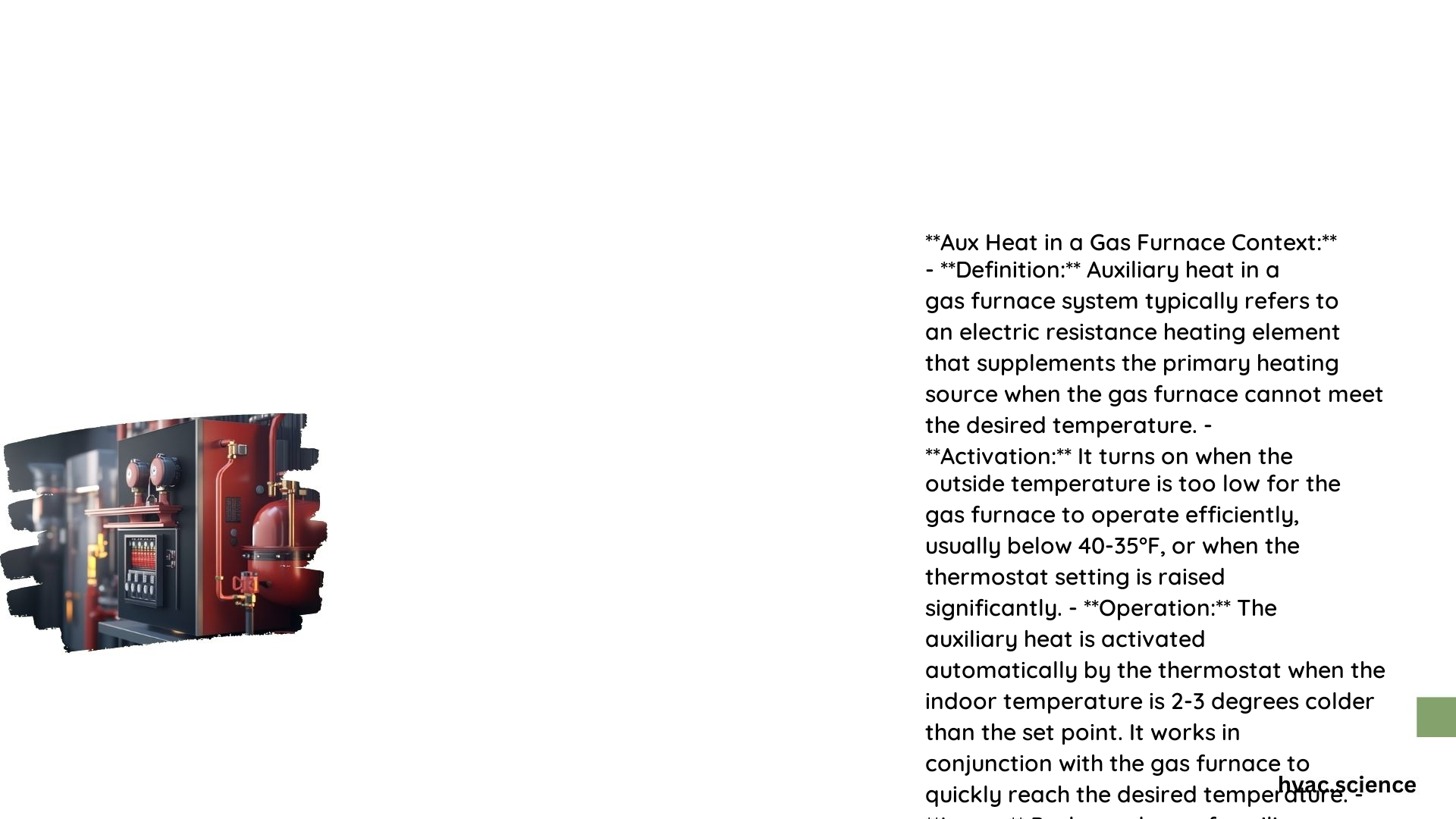What are the Mechanisms and Technical Specifications of Aux Heat on a Gas Furnace?
In a gas furnace system, auxiliary heat (often referred to as “aux heat” or “emergency heat”) is typically not a feature of the gas furnace itself but rather a supplemental heating source that can be part of a hybrid or dual-fuel system. This system combines a heat pump with a gas furnace. When the heat pump cannot efficiently heat the home due to cold temperatures, the thermostat switches to the gas furnace as the primary heating source.
The system includes an outdoor heat pump unit and an indoor air handler. When the outdoor temperature drops below a certain threshold (usually around freezing), the heat pump’s efficiency decreases, and the thermostat may switch to the gas furnace to provide heat. This switch is often automated based on temperature settings and the system’s configuration.
The exact technical specifications can vary depending on the system model and configuration. However, key components include:
- Thermostat Settings: The thermostat is programmed to switch between the heat pump and the gas furnace based on outdoor temperatures and the desired indoor temperature. For example, if the outdoor temperature is below a set threshold (e.g., 35°F), the thermostat may switch to the gas furnace.
- Dual-Fuel Systems: These systems can be configured to use either the heat pump or the gas furnace, depending on the outdoor temperature. The system may have multiple stages of heating, allowing it to optimize performance and efficiency.
When are Aux Heat Scenarios and Conditions Utilized?

Aux heat is typically utilized when the outdoor temperature is too low for the heat pump to operate efficiently. This threshold can vary but is often around 32°F to 35°F. Below this temperature, the heat pump’s ability to transfer heat from the outside air diminishes significantly.
Cold weather, particularly prolonged periods of freezing temperatures, is the primary environmental factor that triggers the use of aux heat. Other factors might include sudden temperature drops or high heating demands that the heat pump cannot meet.
If the heat pump is malfunctioning or if the system is not properly maintained, the thermostat may switch to aux heat more frequently than necessary, which can increase energy costs.
What are the Benefits, Efficiency, and Cost Implications of Aux Heat?
The efficiency of using aux heat with a gas furnace depends on the cost of electricity versus the cost of gas in your area. In many regions, gas furnaces are more cost-effective for heating during extremely cold weather because they provide warmer air and can heat the home more quickly than a heat pump.
Running a gas furnace as aux heat can be more expensive than using a heat pump, especially if gas prices are high. However, it can also be more efficient in terms of heating performance during very cold weather. The overall cost-effectiveness depends on local utility rates and the specific system’s efficiency.
The use of aux heat ensures that the home remains warm even in very cold conditions. Gas furnaces can provide a faster and more consistent heating performance compared to heat pumps in such scenarios.
How to Compare Energy Consumption and Optimize Aux Heat Operation?
The energy consumption comparison between standard heating and aux heat usage can be complex and depends on various factors, including local utility rates, system efficiencies, and usage patterns. Generally, gas furnaces consume more energy than heat pumps in mild weather but can be more efficient in extremely cold conditions due to their ability to provide direct heat.
For optimal operation, it is crucial to maintain the system properly, ensure the thermostat is set correctly, and consider the cost implications of using aux heat. Regular maintenance can help prevent unnecessary switches to aux heat and optimize the overall efficiency of the system.
Reference:
